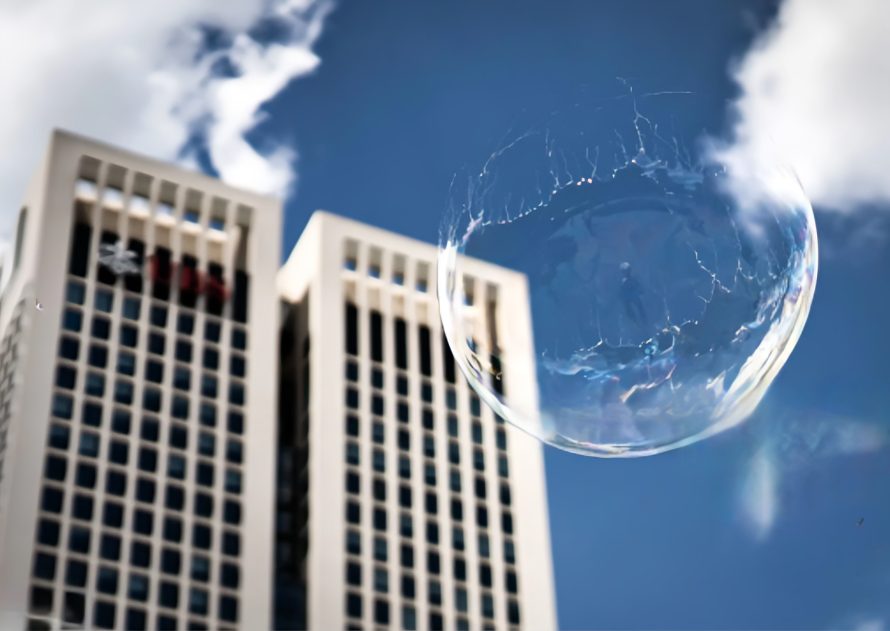4. How to limit the influence of a bubble on your portfolio
We have covered the causes of bubbles and the five stages of their life cycle. Investing in public markets does not give an investor total protection, but there are ways to mitigate the damage caused by bubbles. Remember that the worst approach is to attack a bubble head-on with a stock-picking strategy. This is the antithesis of hedging against economic bubbles. Eventually, bubbles will burst and impact portfolios, but there are time-tested strategies that investors use to limit the impact.
1. Ride a bubble
Those who maintain a cool head can theoretically benefit from the low prices, which occur during and after the boom. These investors can view it as a buying opportunity. But again, it’s not about a stock-picking strategy (more on that below). Profiting from investing in a crisis requires discipline, patience, enough wealth in liquid assets available to make opportunistic purchases, and, of course, plenty of time for due diligence and tracking when to get out.
It is important to do your due diligence, and track investments so you can time when to exit. On the other end of the spectrum of catalysts, fear can drive prices below their intrinsic value, and that’s where patient investors who allow prices to revert to their expected levels will be rewarded.
Timing is crucial. Even institutional investors often fail to make the right call. For people without any professional experience, the risks may well outweigh the potential gains. Looking at data from the chart below, the numbers show that if an investor missed out on the S&P 500’s 10 best days per decade, their total returns would be significantly lower than the return for investors who waited it out. This suggests that investors should contribute to their portfolios consistently rather than trying to time the market by trading in and out with some variation on a stock-picking strategy.
The difficulties of trying to time the market
Source: CNBC
2. Short the market
Another way to make money during a crisis is by betting that a crisis will even happen. Hindsight is 20/20, but even macroeconomic events are extremely difficult to foresee. Short-selling stocks or short equity index futures is a way to profit from a bear market, but it’s also an extremely risky strategy. Essentially, a short seller borrows shares that they do not already own with the intention of selling and then buying back at a lower price. The graph below illustrates this process.
Short selling scheme
Most investors are restricted from short selling or they do not have access to derivatives markets, but if they do, they could have an emotional or cognitive bias against short selling. Additionally, short-sellers may have to cover their positions for a loss if markets rise (rather than fall) when margin calls are issued. This is a strategy that has been glamorized such as in the 2015 Hollywood film, The Big Short, but the reality is there is significant risk involved. Still, it remains a way to possibly make a quick profit just before a market bubble bursts.
3. Use an alternative investment strategy for hedging
The above-mentioned strategies are exceedingly risky. You could lose all your money, and not only that, it could drive you into debt as well. We have touched on some of the reasons for this risk already, but delving further:
- Successfully timing the market is extremely difficult. Even institutional investors struggle to do this successfully (and consistently). Someone with no experience or training could lose everything with one bad call.
- Investors who short stock can lose more than 100 percent of their original investment. Referencing the graph above, if the market were to rise instead, the short-sellers would be forced to cover their positions, so they could lose USD 100 more (USD 600 total in the example) instead of gaining it. Bear markets happen fast and typically do not last long because the stock market rapidly discounts a bleak future, whereas bull markets rise more slowly over time.
Back to the original question: How can you limit the influence of a bubble on your portfolio? And what can you do with all this information?
The optimal strategy to protect yourself from uncertain market conditions is to diversify with alternative assets. This can protect you from market movements headed by investors’ herd mentality.
The reasons alternative assets might work as a hedge against bubbles are as follows:
- Alternative investments are typically less volatile and less correlated to the stock market, making them well-suited for diversification. Their reduced volatility is due to their typically long investment horizons, which require investors to commit for a set period. Valuations are also more fundamental, rather than being influenced by momentum trading or emotion.
- Alternative investments may not just offer risk protection. They could go as far as to outperform the market. According to our calculations, if you invested CHF 1'000 in Cambridge Associates LLC US Private Equity Index in 1997 instead of the Swiss Market Index (SMI), the total cumulative return would be 1'271.97% more at the end of Q1 2022. In essence, this is the Holy Grail of lower risk as well as possibly higher returns.
Cumulative performance comparison of public and private equity (in CHF)
Moonshot Strategies is a prime example of where to drink from this so-called “Holy Grail.” Moonshot offers specially curated investment baskets, including private equity, private debt, and luxury and commercial real estate. These asset classes can offer lower volatility and more lucrative returns, as well as provide substantial diversification benefits for a portfolio already consisting of traditional assets due to the lower correlation with the stock market.






